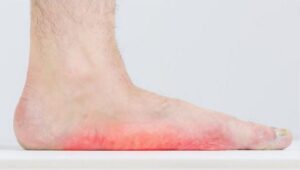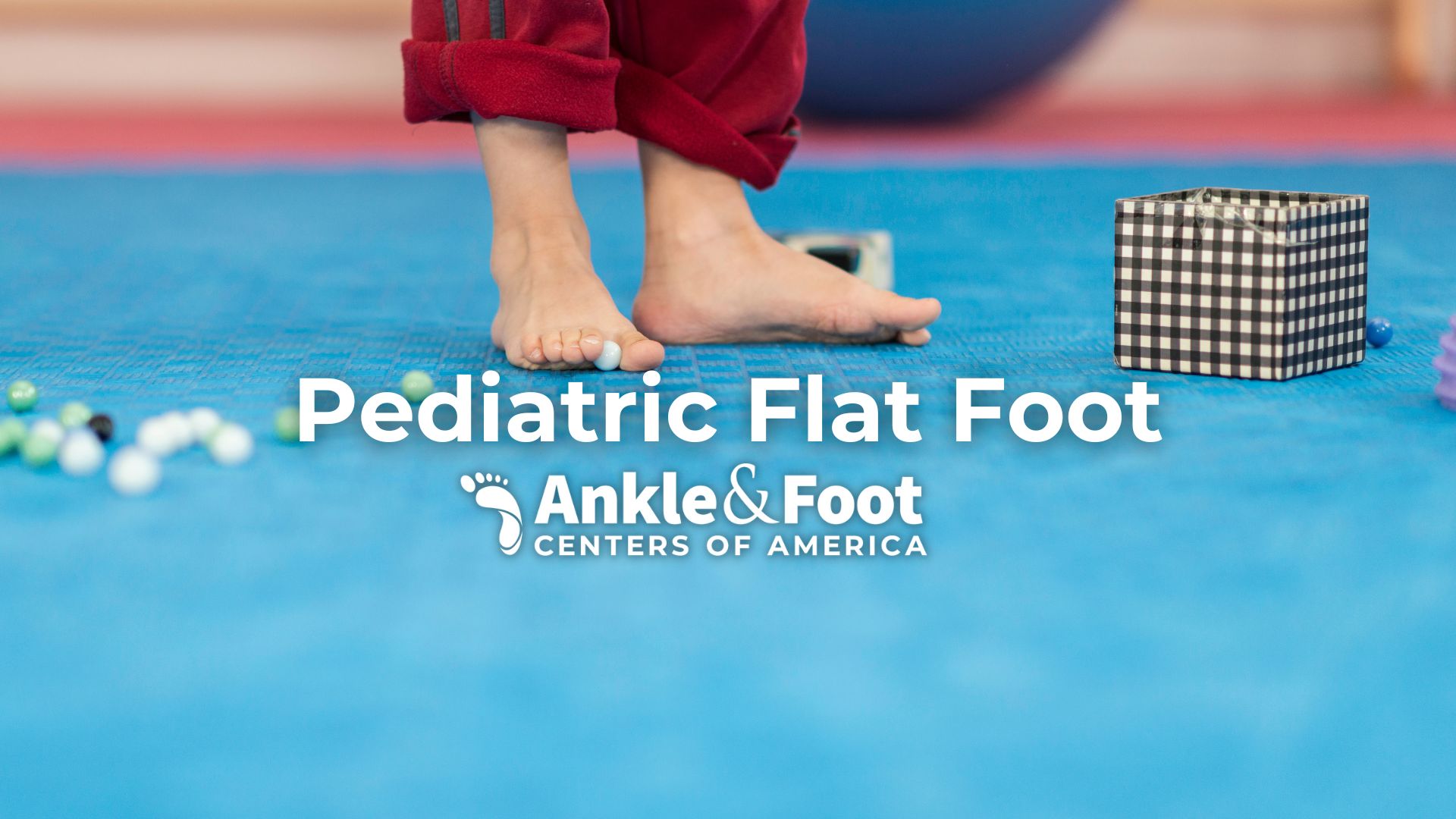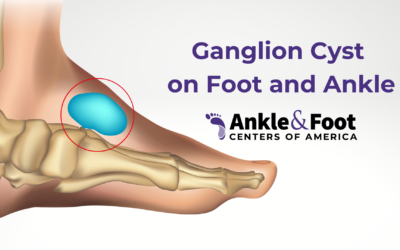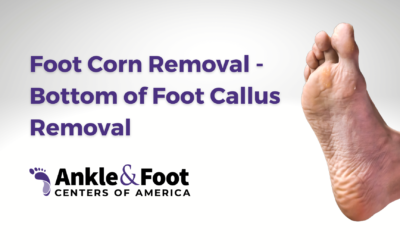Understanding Pediatric Flat Foot
Pediatric flat foot, often referred to as “fallen arches” or “pes planus” in medical terminology, is a common condition observed in children where the arch of the foot, which is typically raised off the ground slightly when standing, is not present. This means the entire sole of the foot comes into complete or near-complete contact with the ground. While it’s a condition that can persist into adulthood, it’s particularly prevalent in the early years of a child’s life.
The Prevalence of the Condition
It’s essential to note that having flat feet during infancy and early childhood is normal. The arch of the foot typically develops between the ages of 3 and 10. However, for some individuals, this arch never fully develops, even after the age of 10. According to various studies, flat foot affects about 15-30% of the population. While many children outgrow this condition, others carry it into their adult years.
Why Understanding Pediatric Flat Foot is Crucial
Awareness and understanding of pediatric flat foot are vital for several reasons:
- Early Detection: Recognizing the signs early can lead to timely interventions, ensuring that any potential complications are minimized.
- Physical Activity: Children with untreated flat foot might experience discomfort or pain during physical activities, which could deter them from participating in sports or other recreational activities.
- Developmental Concerns: While many cases of pediatric flat foot are benign, some might be indicative of more severe underlying issues, such as neurological or muscular conditions.
Basics of Foot Anatomy
The Marvel of Human Foot Structure
The human foot is a marvel of evolutionary engineering, designed to bear the weight of the entire body, provide balance, and facilitate movement. Comprising a complex network of bones, muscles, tendons, and ligaments, the foot’s anatomy is both intricate and fascinating.
The Arch: Nature’s Shock Absorber
One of the most distinctive features of the human foot is its arch. This curved structure, which elevates the central part of the foot off the ground, plays several crucial roles:
- Weight Distribution: The arch helps distribute the body’s weight across the foot, ensuring that no single part bears excessive load.
- Shock Absorption: As we walk, run, or jump, the arch compresses slightly, absorbing the impact and preventing jarring forces from traveling up the leg.
- Foot Flexibility: The arch allows the foot to adapt to various terrains, ensuring stability and balance.
There are three primary arches in the foot:
- Medial Longitudinal Arch: This is the most prominent arch and runs from the heel to the ball of the foot along the inside edge.
- Lateral Longitudinal Arch: Situated on the outer edge of the foot, this arch is flatter than its medial counterpart.
- Transverse Arch: This arch runs horizontally across the midfoot.
Bones and Joints: The Foot’s Framework
The foot consists of 26 bones, grouped into three main sections:
- Forefoot: Comprises the five toes (phalanges) and the five longer bones (metatarsals).
- Midfoot: A pyramid-like collection of bones, including the navicular, cuboid, and three cuneiform bones. This section forms the foot’s arches.
- Hindfoot: This section connects the midfoot to the ankle and includes the heel bone (calcaneus) and the talus.
These bones are connected by joints, which provide the foot with its range of motion.
Muscles, Tendons, and Ligaments: The Movers and Stabilizers
The foot’s movement and stability are facilitated by its muscles, tendons, and ligaments. Key among these are:
- Achilles Tendon: Connecting the calf muscle to the heel, this is the body’s strongest and largest tendon.
- Plantar Fascia: A thick band of tissue running from the heel to the toes, providing arch support.
- Extensor Tendons: These help in toe extension and foot dorsiflexion.
Understanding Pediatric Flat Foot
 A Closer Look at the Condition
A Closer Look at the Condition
Pediatric flat foot, as previously introduced, is a condition where the natural arch of a child’s foot is either not developed or less pronounced. While it’s a common occurrence in infants and toddlers, it becomes a point of concern if the arch doesn’t develop with age.
Types of Pediatric Flat Foot
Broadly, pediatric flat foot can be categorized into two main types based on its flexibility and underlying causes:
- Flexible Flat Foot: This is the most common type of flat foot in children. Here, the foot has an arch when relaxed (like when the child is sitting) but flattens upon standing or bearing weight. This type is generally painless and often resolves on its own as the child grows.
- Rigid Flat Foot: This type is less common and is characterized by a persistent absence of the arch, irrespective of whether the foot is bearing weight or not. Rigid flat foot can be a result of an underlying condition or problem with the bones, tendons, or ligaments in the foot. It might be associated with pain or discomfort and often requires medical intervention.
Causes and Contributing Factors
Understanding the root causes and factors contributing to pediatric flat foot can provide clarity on its occurrence and guide treatment approaches. Some primary causes include:
- Genetics: A family history of flat feet can increase the likelihood of a child developing the condition.
- Developmental Factors: As children grow, their feet undergo various changes. Sometimes, the ligaments and joints in the foot can be overly flexible, leading to flat foot.
- Underlying Medical Conditions: Conditions like cerebral palsy, muscular dystrophy, or connective tissue disorders can contribute to the development of rigid flat foot.
- Injuries or Trauma: Injuries to the foot or lower leg, especially during crucial developmental years, can lead to flat foot.
- Improper Footwear: Shoes that do not support the foot’s natural arch can exacerbate the condition.
Diagnosing Pediatric Flat Foot
Early diagnosis can play a pivotal role in managing and treating pediatric flat foot. The diagnostic process typically involves:
- Physical Examination: A skilled podiatrist will examine the foot’s structure, both at rest and while bearing weight. They may also observe the child’s walking pattern.
- Medical History: Understanding any family history of flat foot or related conditions can provide insights into the potential causes.
- Imaging Tests: In some cases, X-rays, MRIs, or CT scans might be recommended to get a detailed view of the foot’s anatomy and identify any underlying issues.
Implications of Pediatric Flat Foot
The Ripple Effect of a Flattened Arch
While many children with flat feet experience no symptoms and face no hindrance in their daily activities, for some, this condition can have broader implications. The foot, being the foundation of our skeletal structure, influences the alignment and function of joints and regions further up the body. As such, untreated or severe cases of pediatric flat foot can lead to a cascade of complications.
Physical Discomfort and Pain
- Foot Pain: The most direct implication of flat feet is discomfort or pain in the feet. This can be especially pronounced after prolonged periods of standing, walking, or engaging in sports.
- Swelling: Some children might experience swelling along the inside of the ankle, stemming from the tendon that supports the arch.
- Calf Pain: The altered foot structure can lead to strain in the calf muscles.
Altered Biomechanics
- Walking Pattern: Flat feet can influence a child’s gait. This altered walking pattern, often referred to as overpronation, means the foot rolls inwards more than usual, potentially leading to discomfort or pain in the feet, ankles, and even knees.
- Postural Issues: The ripple effect of flat feet can travel upwards, potentially affecting posture. Over time, this can lead to misalignment in the ankles, knees, hips, and lower back.
Development of Other Foot Conditions
- Bunions: These are bony bumps that form at the base of the big toe, resulting from the foot’s altered mechanics.
- Hammertoes: This condition, characterized by toes that curl downward, can be a consequence of flat feet.
- Achilles Tendinitis: The Achilles tendon, which connects the calf muscle to the heel, can become inflamed due to the foot’s altered structure and movement.
Addressing the Implications: The Need for Timely Intervention
Recognizing these implications early on is crucial. While many children with flat feet will never experience these complications, for those who do, early intervention can prevent further deterioration and improve quality of life. It’s essential for parents and caregivers to monitor any signs of discomfort, pain, or altered movement patterns in their children and seek medical advice when in doubt.
Management and Prevention
Proactive Steps for Pediatric Flat Foot
While pediatric flat foot can sometimes resolve on its own, proactive management and preventive measures can play a pivotal role in ensuring the child’s comfort and overall foot health. Addressing the condition early can prevent potential complications and set the stage for optimal foot development.
Non-Surgical Treatment Options
- Orthotic Devices: Custom-made shoe inserts, known as orthotics, can provide the necessary arch support, redistributing pressure evenly across the foot. They can also correct overpronation and alleviate discomfort.
- Physical Therapy: Engaging in specific exercises can strengthen the foot and leg muscles, enhancing foot stability and potentially promoting the development of the arch.
- Supportive Footwear: Shoes with a good arch support and a firm heel counter can be beneficial. It’s essential to avoid shoes with a flat or worn-out sole.
- Weight Management: Maintaining a healthy weight can reduce undue stress on the feet, potentially alleviating symptoms.
- Medications: In cases where there’s significant pain or inflammation, over-the-counter pain relievers might be recommended.
Surgical Interventions
While most children with flat feet won’t require surgery, it becomes a consideration in severe cases or when there’s significant pain that doesn’t respond to non-surgical treatments. Surgical options can range from procedures that reshape the foot’s bones to those that repair tendons or ligaments.
Prevention: Setting the Right Foot Forward
While not all cases of pediatric flat foot can be prevented, especially those due to genetic factors, certain measures can promote healthy foot development:
- Regular Foot Checks: Regularly inspecting a child’s foot can help detect any abnormalities early on. Look for any changes in the foot’s shape, especially when the child stands.
- Encourage Physical Activity: Activities like walking barefoot on sand or grass can naturally exercise the foot muscles, promoting healthy development.
- Choose the Right Footwear: Avoid tight shoes or those that lack support. Ensure that the child’s foot has enough room to move and grow.
- Monitor Pain or Discomfort: If a child complains of foot pain or you notice an altered walking pattern, seek medical advice.
Deep Dive: Things to Know
Unraveling the Layers of Pediatric Flat Foot
 While we’ve explored the basics of pediatric flat foot, its implications, and management strategies, there are specific facets of this condition that warrant a closer look. By delving deeper into these areas, we can equip ourselves with a more nuanced understanding, ensuring that children affected by this condition receive the best care possible.
While we’ve explored the basics of pediatric flat foot, its implications, and management strategies, there are specific facets of this condition that warrant a closer look. By delving deeper into these areas, we can equip ourselves with a more nuanced understanding, ensuring that children affected by this condition receive the best care possible.
Pediatric Flat Foot Symptoms
While many children with flat feet may not exhibit any noticeable symptoms, some common signs include:
- Arch Absence: The most evident sign is the absence of the arch when standing.
- Foot Turning Outward: The child’s feet may turn outward at the ankles.
- Toe Walking: Some children might walk on their toes.
- Pain or Cramping: Discomfort in the foot, calf, or lower leg, especially after physical activity.
- Uneven Shoe Wear: The shoes might wear out unevenly, especially on one side.
Pediatric Flat Foot Exercises
Regular exercises can help strengthen the foot’s muscles, potentially promoting the development of the arch and alleviating symptoms. Some beneficial exercises include:
- Heel Cord Stretch: Stretching the Achilles tendon can improve flexibility.
- Towel Curls: Sitting down, place a towel under the feet and curl the toes to grasp it, pulling it towards oneself.
- Marble Pickup: Using the toes, pick up marbles from the floor.
- Arch Lifts: While sitting, lift the arch of the foot while keeping the toes and heel on the ground.
Pediatric Flat Foot Surgery
Surgery is typically a last-resort option, considered only when conservative treatments fail to provide relief. Some surgical procedures include:
- Tendon Transfer: Re-routing a tendon to provide better support to the arch.
- Arthrodesis: Fusing bones together to eliminate joint movement.
- Osteotomy: Cutting and reshaping bones to realign the foot.
- Lateral Column Lengthening: Adding a bone graft to the outside of the foot to support the arch.
Pediatric Flat Foot Orthotics
Custom orthotic devices can provide the necessary support to the foot, correcting the foot’s alignment and redistributing pressure. They can be especially beneficial for children with flexible flat foot, providing relief and preventing further complications.
Comparison: Flat Foot vs. Normal Foot Development
Understanding the differences between a flat foot and typical foot development can provide clarity:
- Arch Presence: While a normal foot has a visible arch when standing, a flat foot lacks this elevation.
- Footprint Test: A footprint of a flat foot will show almost the entire sole, whereas a regular foot will have a curve on the inner side.
- Flexibility: A flexible flat foot will show an arch when not bearing weight, reverting to flat when standing. A typical foot maintains its arch irrespective of weight-bearing.
Additional Insights
Expanding the Horizon on Pediatric Flat Foot
While we’ve delved deep into the anatomy, implications, and management of pediatric flat foot, there are still more layers to uncover. This section aims to provide additional insights, shedding light on lesser-known facets of the condition and offering a more holistic understanding.
Pediatric Flat Foot Treatment Options
Beyond the commonly discussed treatments, there are other avenues to explore:
- Activity Modification: Sometimes, simply reducing or modifying certain activities that exacerbate pain can provide relief.
- Night Splints: These devices, worn during sleep, can help maintain the foot in a dorsiflexed position, potentially promoting arch development.
- Weight-bearing Exercises: Activities like jumping or skipping can sometimes help in the natural development of the arch.
Causes of Flat Foot in Young Children
While we’ve touched upon some causes, it’s worth noting that there are other, rarer causes:
- Tarsal Coalition: A congenital condition where two or more bones in the foot fuse together, limiting movement and causing flat foot.
- Accessory Navicular: The presence of an extra bone or piece of cartilage on the inner side of the foot can lead to flat foot.
- Neuromuscular Diseases: Conditions like spina bifida or muscular dystrophy can result in flat foot.
Exercises to Correct Pediatric Flat Foot
Specific exercises can potentially help in correcting or alleviating the condition:
- Balance Exercises: Standing on one foot or using a balance board can strengthen foot muscles.
- Walking Patterns: Encouraging children to walk on their heels, toes, or the outside of their feet can be beneficial.
- Ankle Strengthening: Using resistance bands to push against the foot can strengthen the ankle and associated muscles.
Pediatric Flat Foot and Sports Activities
Children with flat feet can often participate in sports without any hindrance. However, some considerations include:
- Sport Selection: Low-impact sports like swimming can be more comfortable for children with symptomatic flat feet.
- Footwear: Ensuring the right sports shoes with adequate arch support is crucial.
- Warm-up and Cool-down: Proper stretching before and after sports can prevent potential discomfort or injury.
Pediatric Flat Foot and Shoe Selection
The right footwear can make a world of difference:
- Arch Support: Shoes with built-in arch support can be beneficial.
- Avoid High Heels: For older kids, especially girls, avoiding high heels can prevent exacerbating the condition.
- Flexible Sole: A shoe with a flexible sole can provide comfort and support.
Frequently Asked Questions:
Given the prevalence and multifaceted nature of pediatric flat foot, it’s natural for parents, caregivers, and even adults who once had the condition as children to have questions. This section aims to address some of the most frequently asked questions, providing clarity and dispelling myths.
What is pediatric flat foot?
Pediatric flat foot refers to a condition in children where the natural arch of the foot is less pronounced or entirely absent. This results in the entire sole of the foot making contact with the ground when standing.
How is pediatric flat foot diagnosed?
The condition is primarily diagnosed through a physical examination by a board-certified foot doctor. They will observe the foot both at rest and while bearing weight. In some cases, imaging tests like X-rays or MRIs might be recommended for a more detailed assessment.
What are the causes of flat foot in kids?
While genetics play a significant role, other causes include developmental factors, underlying medical conditions, injuries, and even improper footwear.
Are there any treatments available for pediatric flat foot?
Yes, treatments range from non-surgical interventions like orthotics, physical therapy, and supportive footwear to surgical procedures in more severe cases.
How common is flat foot in children?
Flat foot is quite common in infants and toddlers, with many outgrowing the condition. However, it’s estimated that about 15-30% of the population may have flat feet, with some carrying it into adulthood.
Can flat foot in kids be corrected with exercises?
Certain exercises can help strengthen the foot’s muscles and potentially promote arch development. While exercises might not “cure” the condition, they can alleviate symptoms and improve foot function.
What are the complications associated with untreated pediatric flat foot?
If left untreated, especially in symptomatic cases, pediatric flat foot can lead to pain, altered walking patterns, and even complications like bunions, hammertoes, and Achilles tendinitis.
Is surgery an option for severe cases of pediatric flat foot?
Yes, while most children won’t require surgical intervention, it becomes a consideration in severe cases or when there’s significant pain that doesn’t respond to non-surgical treatments.
Wrapping Up: Navigating the Path of Pediatric Flat Foot
As we conclude our comprehensive exploration of pediatric flat foot, it’s evident that this condition, while common, is layered with complexities. From understanding its anatomy and causes to diving deep into management strategies and real-life stories, we’ve traversed the multifaceted landscape of this prevalent foot condition.
Parents and caregivers can draw solace from the fact that, with timely intervention and the right care, children with flat feet can lead active, fulfilling lives. The key lies in awareness, early detection, and a proactive approach to management.
Moreover, the personal journeys shared highlight the resilience and adaptability of both children and their families. These stories serve as a beacon of hope, illustrating that challenges can be overcome, and individual quirks can be celebrated.




